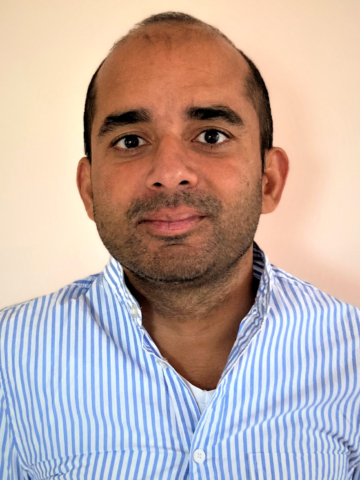Center for Medicine
Department of Medicine II
Medical Center – University of Freiburg
Hugstetter Str. 55
79106 Freiburg i. Brsg.
- +49 (0)761 270-36330
- sagar@uniklinik-freiburg.de
- Homepage

Current position
Group leader, Department of Medicine II (Gastroenterology, Hepatology, Endocrinology, and Infectious Diseases), Center for Medicine, Medical Center – University of Freiburg
Academic training
| 2004 - 2009 | Study of Biochemical Engineering and Biotechnology, Indian Institute of Technology, Delhi, India |
Scientific qualifications
| 2010 - 2014 | Dissertation in Developmental Biology, University of Freiburg (Supervisor: Prof. Dr. Martin Scaal) |
Postgraduate Positions
| since 2020 | Group leader, Department of Medicine II, Medical Center – University of Freiburg |
| 2015 - 2020 | Postdoctorate, Max Planck Institute of Immunobiology and Epigenetics, Freiburg |
| 2015 | Postdoctorate, Department of Developmental and Stem Cell Biology, Pasteur Institute, Paris, France |
link to all publications from Sagar: ORCID ID
Publications based on CRC1160 funding
Heim K, Sagar, Sogukpinar Ö, Llewellyn-Lacey S, Price DA, Emmerich F, Kraft ARM, Cornberg M, Kielbassa S, Knolle P, Wohlleber D, Bengsch B, Boettler T, Neumann-Haefelin C, Thimme R, Hofmann M. 2024. Attenuated effector T cells are linked to control of chronic HBV infection. Nat Immunol. 25(9):1650-1662. doi: 10.1038/s41590-024-01928-4.
Arnold F, Kupferschmid L, Weissenborn P, Heldmann L, Hummel JF, Zareba P, Sagar, Rogg M, Schell C, Tanriver Y. 2024. Tissue-resident memory T cells break tolerance to renal autoantigens and orchestrate immune-mediated nephritis. Cell Mol Immunol. Jul 3. doi: 10.1038/s41423-024-01197-z.
Herr LA, Fiala GJ, Sagar, Schaffer AM, Hummel JF, Zintchenko M, Raute K, Velasco Cárdenas RM, Heizmann B, Ebert K, Fehrenbach K, Janowska I, Chan S, Tanriver Y, Minguet S, Schamel WW. 2024. Kidins220 and Aiolos promote thymic iNKT cell development by reducing TCR signals. Sci Adv. 10(11):eadj2802. doi: 10.1126/sciadv.adj2802.
du Halgouet A, Bruder K, Peltokangas N, Darbois A, Obwegs D, Salou M, Thimme R, Hofmann M, Lantz O, Sagar. 2024. Multimodal profiling reveals site-specific adaptation and tissue residency hallmarks of γδ T cells across organs in mice. Nat Immunol. 2024. 343-356. doi: 10.1038/s41590-023-01710-y.
du Halgouet A, Bruder K, Peltokangas N, Darbois A, Obwegs D, Salou M, Thimme R, Hofmann M, Lantz O, Sagar. 2024. Multimodal profiling reveals site-specific adaptation and tissue residency hallmarks of γδ T cells across organs in mice. Nat Immunol. 2024 Jan 4. doi: 10.1038/s41590-023-01710-y.
Sagar. 2024. Unraveling the secrets of γδ T cells with single-cell biology. J Leukoc Biol Vol. 115 Issue 1 Pages 47-56 DOI: 10.1093/jleuko/qiad131


